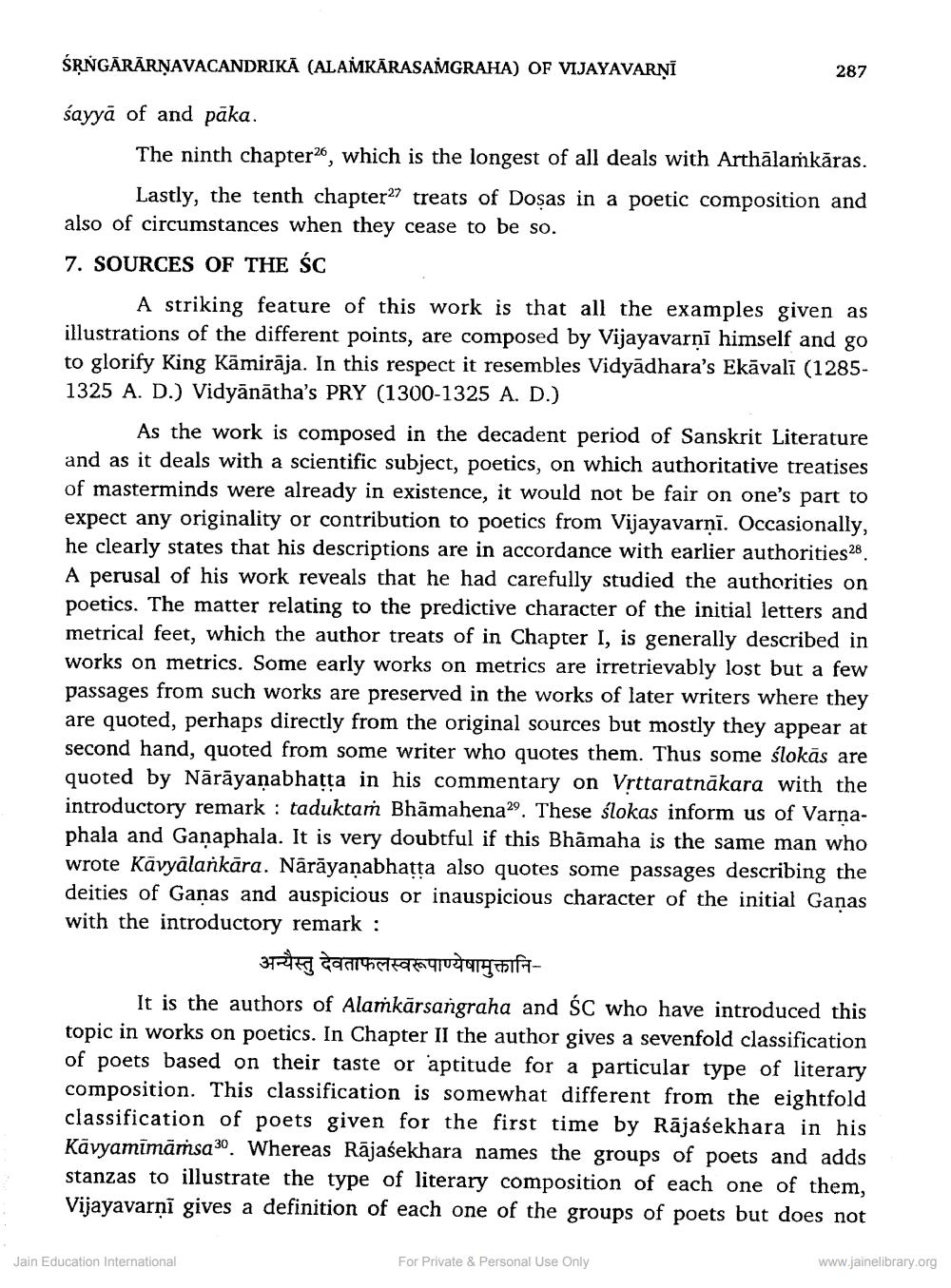________________ SRNGARARNAVACANDRIKA (ALAMKARASAMGRAHA) OF VIJAYAVARNI 287 sayya of and paka. The ninth chapter26, which is the longest of all deals with Arthalaskaras. Lastly, the tenth chapter27 treats of Dosas in a poetic composition and also of circumstances when they cease to be so. 7. SOURCES OF THE SC A striking feature of this work is that all the examples given as illustrations of the different points, are composed by Vijayavarni himself and go to glorify King Kamiraja. In this respect it resembles Vidyadhara's Ekavali (12851325 A. D.) Vidyanatha's PRY (1300-1325 A. D.) As the work is composed in the decadent period of Sanskrit Literature and as it deals with a scientific subject, poetics, on which authoritative treatises of masterminds were already in existence, it would not be fair on one's part to expect any originality or contribution to poetics from Vijayavarni. Occasionally, he clearly states that his descriptions are in accordance with earlier authorities 28. A perusal of his work reveals that he had carefully studied the authorities on poetics. The matter relating to the predictive character of the initial letters and metrical feet, which the author treats of in Chapter I, is generally described in works on metrics. Some early works on metrics are irretrievably lost but a few passages from such works are preserved in the works of later writers where they are quoted, perhaps directly from the original sources but mostly they appear at second hand, quoted from some writer who quotes them. Thus some slokas are quoted by Narayanabhatta in his commentary on Vrttaratnakara with the introductory remark : taduktam Bhamahena29. These slokas inform us of Varnaphala and Ganaphala. It is very doubtful if this Bhamaha is the same man who wrote Kavyalarkara. Narayanabhatta also quotes some passages describing the deities of Ganas and auspicious or inauspicious character of the initial Ganas with the introductory remark : अन्यैस्तु देवताफलस्वरूपाण्येषामुक्तानिIt is the authors of Alaskarsangraha and SC who have introduced this topic in works on poetics. In Chapter II the author gives a sevenfold classification of poets based on their taste or aptitude for a particular type of literary composition. This classification is somewhat different from the eightfold classification of poets given for the first time by Rajasekhara in his Kavyamimamsa 30. Whereas Rajasekhara names the groups of poets and adds stanzas to illustrate the type of literary composition of each one of them, Vijayavarni gives a definition of each one of the groups of poets but does not For Private & Personal Use Only Jain Education International www.jainelibrary.org




